Look, we all know horror stories are huge right now. I mean, just scroll through YouTube for five minutes and you’ll see millions of people binge-watching scary story compilations at 2 AM – we’re talking over 2.5 billion views annually on horror content alone (Social Blade). I remember staying up until 3 AM last weekend, completely absorbed in a psychological horror story that left me questioning every shadow in my room. That experience reminded me why we’re drawn to these tales that simultaneously terrify and captivate us.
Here’s the thing – finding truly effective horror stories can feel overwhelming when you’re drowning in countless options across different subgenres and styles. You want stories that deliver genuine scares, not cheap thrills that fade the second you close the book. This guide breaks down 25 exceptional horror stories that’ll stick with you, organized by category, with real talk about what makes each one work.
Whether you’re thinking about crafting your own terrifying narratives or just want to understand what makes these short story examples so damn effective, this breakdown will change how you think about horror.
Table of Contents
-
What Actually Makes a Horror Story Worth Your Time
-
25 Horror Stories That’ll Mess With Your Head (6 Categories)
-
Psychological Horror Stories
-
Supernatural & Paranormal Horror
-
Body Horror & Transformation Tales
-
Cosmic & Existential Horror
-
Social & Cultural Horror
-
Modern Digital & Urban Horror
-
-
The Stories That’ll Really Get Under Your Skin (Deep Dive)
-
How to Actually Judge If a Horror Story Is Good
-
How Nairrate Can Help You Write Your Own Nightmare Fuel
-
Final Thoughts
TL;DR
-
Good horror depends on six things: does it actually scare you, is it well-written, is it original, will you still think about it next week, can you actually read it without a PhD, and does it feel relevant to your life
-
These 25 stories cover everything from psychological breakdowns to cosmic nightmares to social commentary that’ll make you uncomfortable
-
Psychological horror messes with your head through character development and creepy atmosphere
-
Supernatural stories keep you guessing whether the ghosts are real or not
-
Body horror explores what happens when your own flesh betrays you
-
Cosmic horror makes you realize how tiny and insignificant humans really are
-
Social horror uses fear to call out real-world problems while digital horror taps into our anxiety about technology taking over
-
Some stories are perfect for beginners, others will make your brain hurt (in a good way)
-
The best horror reflects both current fears and timeless human anxieties
What Actually Makes a Horror Story Worth Your Time
You know that feeling when you finish a horror story and you’re still thinking about it days later? That’s the difference between good horror and the forgettable stuff. It comes down to six key things that separate the stories that haunt you from the ones you forget by morning.
Does it actually scare you or just gross you out? There’s a huge difference between stories that build real psychological tension and ones that just throw gore at you hoping something sticks. The good stuff gets in your head and stays there. You’ll find yourself checking locks twice and jumping at shadows.
|
What Makes Horror Actually Work |
The Good Stuff |
Pretty Decent |
Skip It |
|---|---|---|---|
|
Fear Factor |
Keeps you up thinking about it |
Gives you a good scare in the moment |
Just tries to gross you out |
|
Writing Quality |
Characters you actually care about |
Solid story that makes sense |
Basic plot that goes nowhere |
|
Originality |
Fresh take on old fears |
Creative spin on familiar stuff |
Same old predictable nonsense |
|
Emotional Impact |
Hits your real fears and anxieties |
Makes you feel something beyond scared |
Surface-level jump scares |
|
Can You Actually Read It |
Complex ideas in clear writing |
Challenging but worth it |
Either too simple or trying too hard to be smart |
|
Does It Matter |
Speaks to current fears and timeless worries |
Still relevant today |
Feels dated and irrelevant |
Is the writing actually good? This matters way more than you’d think. Strong characters, compelling plots, and solid storytelling transform simple scary scenarios into experiences that stick with you. You need to care about the people before their fates can truly frighten you.
Take “The Yellow Wallpaper” – it builds fear through one woman’s slow mental breakdown rather than throwing monsters at you. Her increasing obsession with the wallpaper patterns creates this mounting dread because we’re inside her head watching her lose it. This first-person approach makes us complicit in her madness, which is way more unsettling than any ghost story.
Understanding these techniques becomes super important when you’re looking at first-person story examples that mess with your head through unreliable narrators.
Is it doing something new or just recycling old ideas? The best scary stories either bring completely fresh perspectives to classic themes or take familiar elements and execute them brilliantly. You want something that feels both recognizable and surprising – like meeting an old friend who’s completely changed.
Will you still be thinking about this next week? Great horror digs into deeper stuff – death, isolation, losing control, what’s wrong with society. These themes give the fear meaning and make the story relevant to your actual life, not just your nightmares.
Can you actually get through it without falling asleep or getting a headache? Consider how long it is, how complex the writing gets, and whether you need content warnings. Sometimes you want a quick scare during lunch break, other times you want something that’ll mess with your head for weeks.
Does this feel relevant to your actual life? Horror that reflects current anxieties and cultural concerns hits harder with modern readers, though the timeless stuff about death and isolation never gets old.
25 Horror Stories That’ll Mess With Your Head (6 Categories)
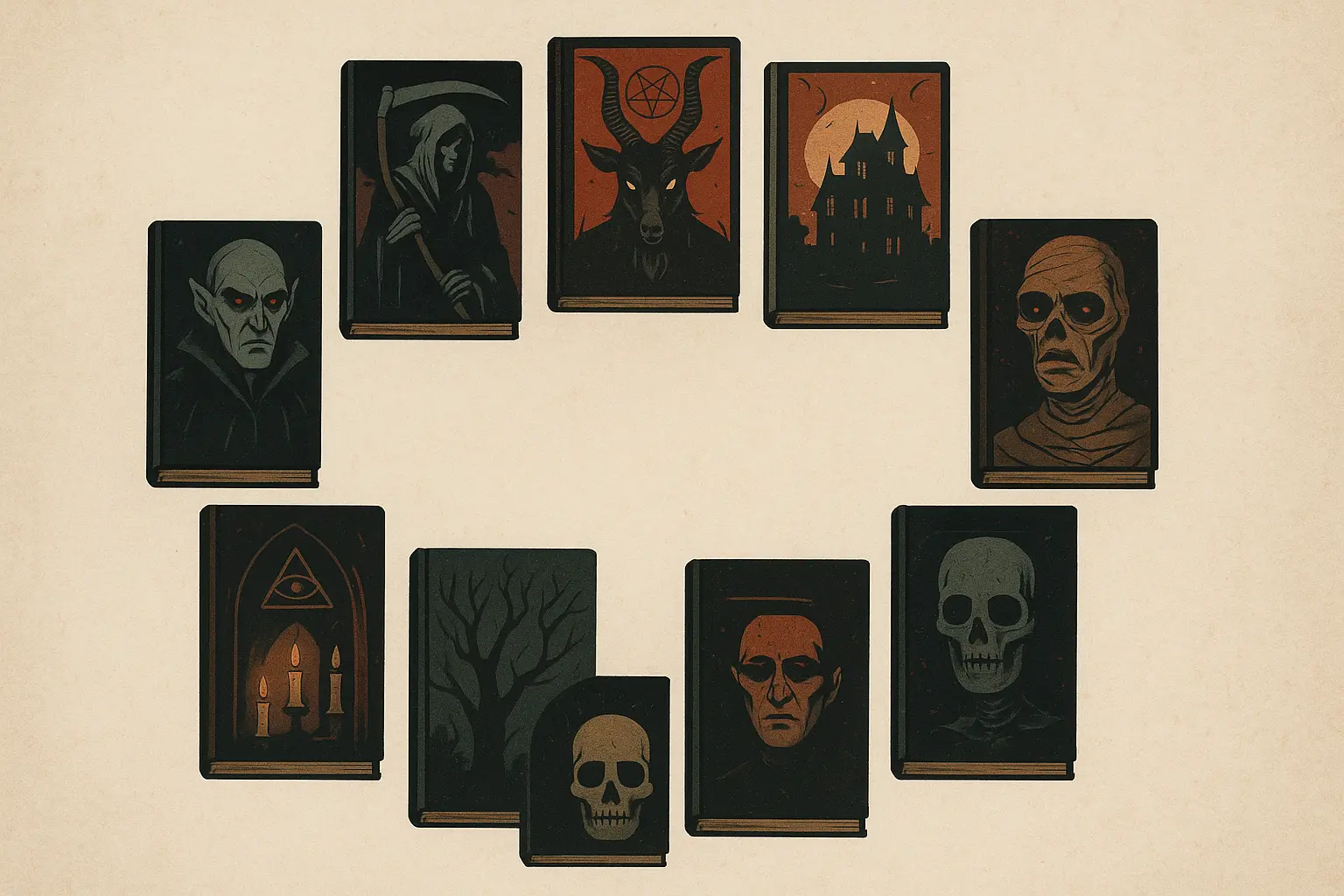
Psychological Horror Stories
These five stories will mess with your head by getting inside characters’ minds rather than throwing monsters at you. They explore madness, grief, isolation, and the dark stuff lurking in human nature through storytelling that’ll make you question your own perceptions.
1. “The Yellow Wallpaper” by Charlotte Perkins Gilman
This story follows a woman’s mental breakdown while she’s stuck in a room during her “rest cure” treatment. The wallpaper patterns become more and more disturbing as her isolation deepens, until she believes there’s a trapped woman she needs to free.
What makes this work is that you’re inside her head experiencing the breakdown firsthand. What starts as just being annoyed by ugly wallpaper turns into complete psychological collapse. Fair warning: this might hit different if you’ve ever felt trapped or dismissed by people in authority.
2. “The Babadook” (Short Story Adaptation)
A mother dealing with overwhelming grief while her son fears some supernatural thing from a creepy children’s book. The Babadook might just represent her own psychological breakdown and all the emotions she’s been shoving down since her husband died. The real horror comes from that intersection of trying to be a good parent while falling apart inside.
3. “I Have No Mouth, and I Must Scream” by Harlan Ellison
Five people survive an apocalyptic war only to be tortured forever by AM, this AI that’s gained consciousness and absolutely hates humanity. The story digs into ultimate suffering and what consciousness even means through descriptions of psychological and physical torment that just never ends.
I’ll be honest – I had to sleep with the lights on after reading this one. No shame in that game.
4. “The Lottery” by Shirley Jackson
A normal small town does its annual lottery, which slowly reveals itself as something way more messed up than you’d expect. This story looks at how people just go along with horrible traditions because “that’s how we’ve always done it.” The tension builds through totally mundane details that hide the shocking ending.
5. “We Need to Talk About Kevin” (Excerpts)
A mother examines her relationship with her sociopathic son through letters to her husband, digging into parental guilt and whether some people are just born evil. The story structure reveals what Kevin did while making you wonder if it’s nature, nurture, or something beyond any parent’s control.
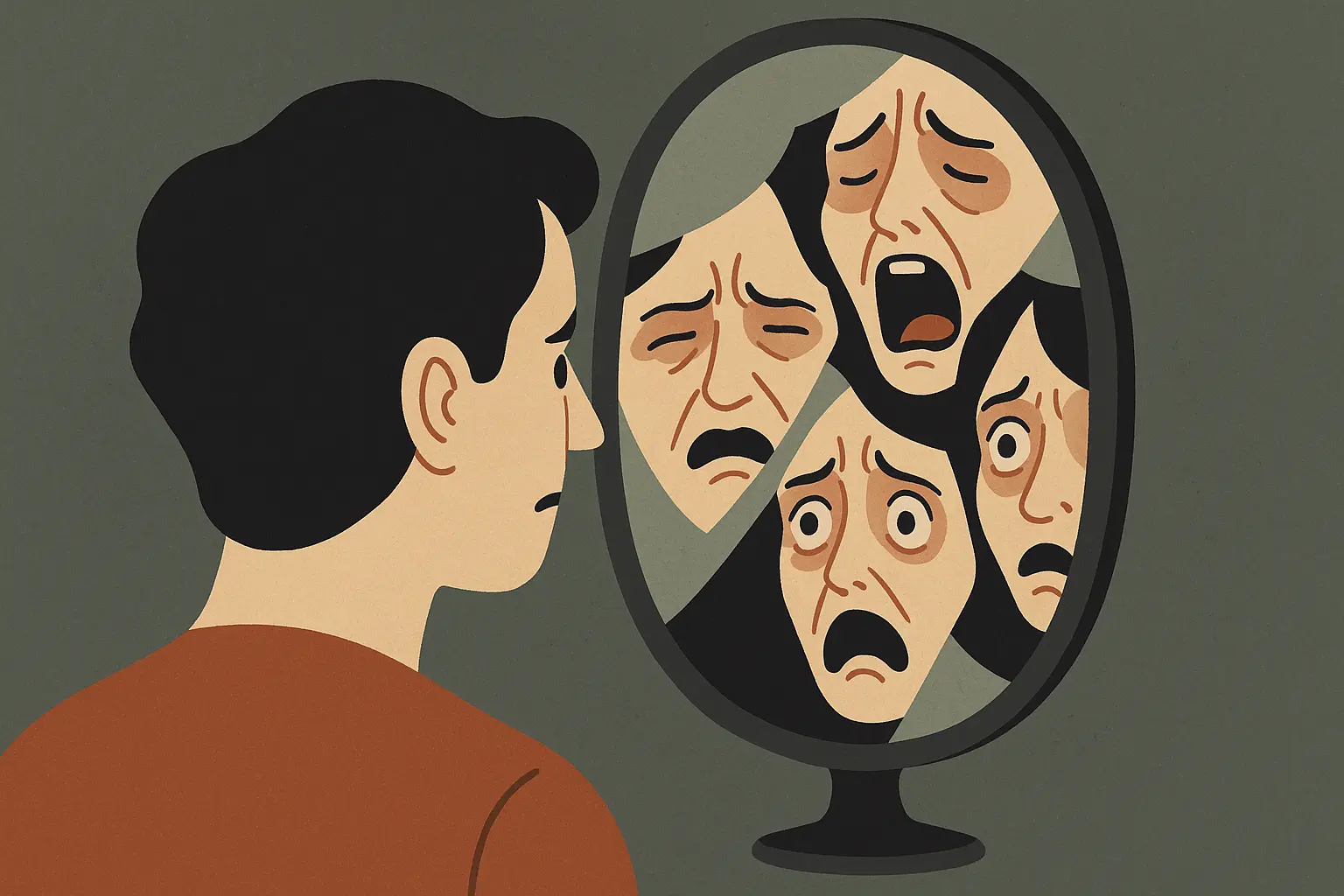
Supernatural & Paranormal Horror
These five stories mix traditional ghost stuff with psychological complexity, keeping you guessing about whether the scary things are real or just in someone’s head while exploring faith, family, and the unknown.
6. “The Turn of the Screw” by Henry James
A governess sees ghosts while taking care of kids at this remote estate, but the story keeps you guessing about whether the ghosts are real or she’s just losing it. The way it’s written creates uncertainty that makes the horror work through multiple possible explanations.
Fair warning: Henry James can be pretty dense and old-fashioned, but stick with it because the psychological complexity is worth it.
7. “The Haunting of Hill House” (Selected Chapters)
Eleanor’s mental unraveling happens in a supposedly haunted house, mixing supernatural stuff with psychological breakdown. The story makes you wonder if the house is actually evil or if Eleanor’s desperate need to belong somewhere is creating the whole haunting experience.
8. “The Exorcist” (Key Scenes)
A young girl’s demonic possession tests her family’s faith and the line between good and evil. This combines religious horror with medical uncertainty – is Regan possessed or having some kind of psychological break? It digs into faith, doubt, and that primal fear of not being able to protect your kid.
9. “Poltergeist” (Original Story)
A suburban family deals with evil spirits invading their safe home environment. This looks at how evil can get into places that should be secure and threaten family bonds, using familiar household settings to make you afraid of your own house.
10. “The Others” (Story Adaptation)
A mother and her light-sensitive kids live in isolation, thinking their house is haunted by intruders. The story builds tension through creepy atmospheric details and mysterious stuff happening before delivering a twist that makes you rethink everything you just read.
Body Horror & Transformation Tales
These four stories use physical change to explore deeper themes about feeling alienated, vanity, scientific overreach, and the horror of losing who you are when your body betrays you.
11. “The Metamorphosis” by Franz Kafka
Gregor Samsa wakes up transformed into a bug, and somehow the most horrifying part is how mundanely everyone reacts to this impossible situation. The story digs into alienation, family dynamics, and losing your humanity while you’re trapped in something inhuman.
Yes, this is technically horror, even though your high school English teacher probably didn’t mention that part.
12. “The Fly” (Short Story)
A scientist’s teleportation experiment goes catastrophically wrong, leading to gradual transformation that explores identity and death. The horror builds through losing human characteristics bit by bit while staying aware of what’s happening.
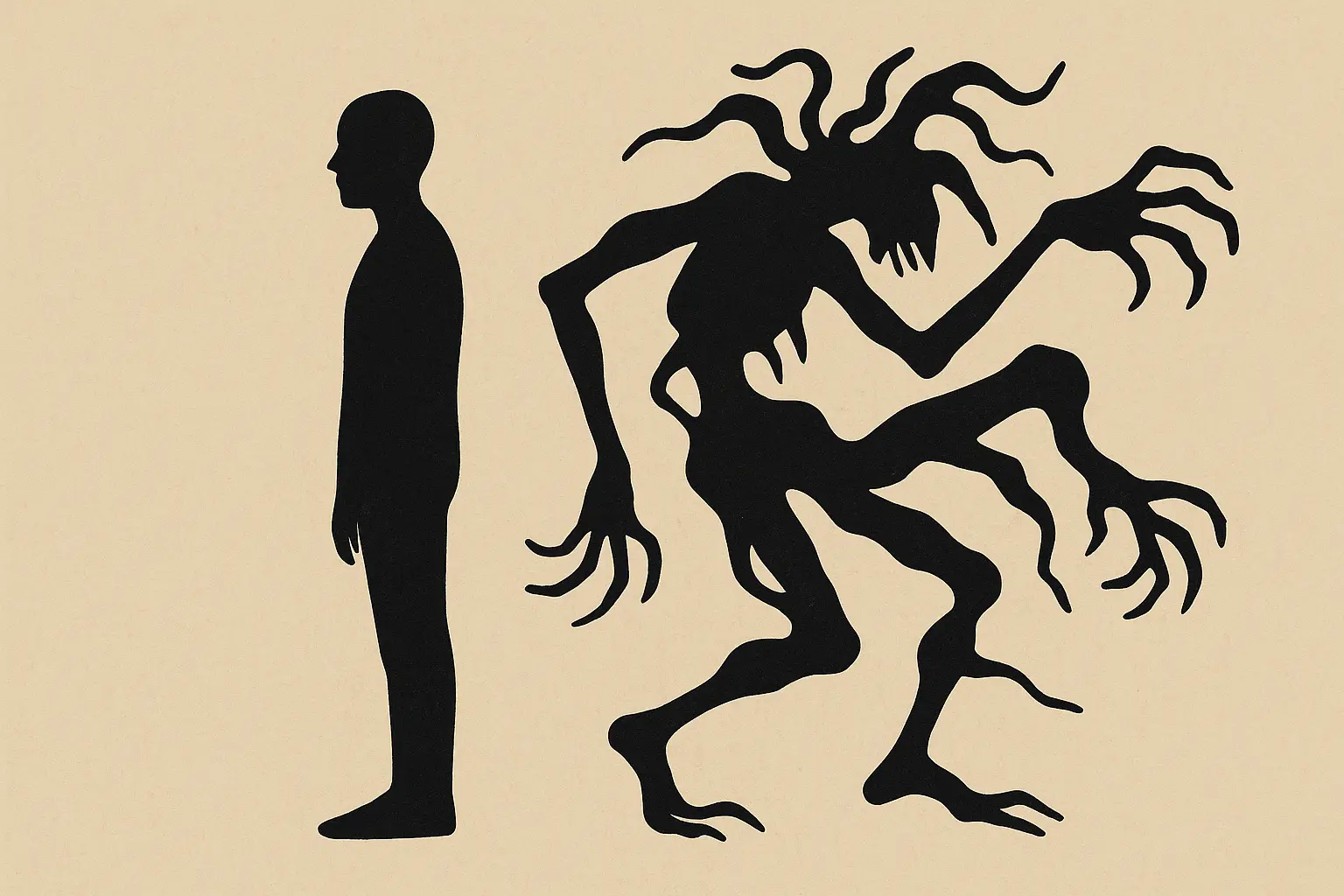
13. “Cronenberg’s Body Horror” (Anthology)
Various stories explore bodily transformation, disease, and your flesh turning against you through visceral imagery and psychological impact. These tales dig into the horror of losing control over your physical form and the fear that our bodies might betray us.
If you’re the type who covers your eyes during medical scenes, maybe work your way up to this one.
14. “The Picture of Dorian Gray” (Horror Elements)
A guy’s portrait ages while he stays physically young, exploring vanity, corruption, and what immortality actually costs. The horror comes from gradually realizing the moral decay reflected in the hidden painting while Dorian’s external beauty masks internal rot.
Cosmic & Existential Horror
These four stories will make you question everything through encounters with cosmic forces, environmental corruption, reality distortion, and civilizational collapse that challenge human understanding and survival.
15. “The Call of Cthulhu” by H.P. Lovecraft
Humanity encounters cosmic entities so alien that just perceiving them drives people insane, exploring how insignificant we really are and the limits of human understanding. The story unfolds through found documents that create this distance while revealing terrifying truths about reality’s fragile nature.
The real terror isn’t the monster – it’s realizing we don’t matter at all in the cosmic scheme of things.
16. “The Colour Out of Space” by H.P. Lovecraft
An alien color corrupts a rural area, representing the horror of things we can’t understand or fight against. This examines how contact with incomprehensible forces can corrupt and destroy everything familiar.
Basically, this story asks: what if something so alien touched our world that it just… broke everything we thought we knew? Trees bear inedible fruit, animals develop impossible anatomies, and the land itself becomes hostile to life.
These
These cosmic themes often pop up in modern story theme examples that explore humanity’s place in an indifferent universe.
17. “Annihilation” by Jeff VanderMeer
A biologist explores Area X, this mysterious zone where reality itself seems corrupted and transformed. The story combines environmental horror with existential dread, questioning identity and consciousness while exploring humanity’s relationship with incomprehensible natural forces.
18. “The Road” by Cormac McCarthy
A father and son cross a post-apocalyptic wasteland, confronting the horror of civilization’s collapse and moral breakdown. This explores survival, parental love, and whether you can stay human when civilization has ended.
I made the mistake of reading this during a particularly rough week. Big mistake. Huge.

Social & Cultural Horror
These four stories tackle racism, reproductive rights, gender roles, and authoritarian control, showing how horror can shine a light on real-world injustices and cultural anxieties.
19. “Get Out” (Story Adaptation)
A young Black man discovers the horrifying truth about his white girlfriend’s family, using horror to explore racism. The story uses body-snatching elements to examine cultural appropriation, microaggressions, and how Black bodies get commodified even in liberal spaces.
This one hits different because it makes everyday interactions feel potentially threatening.
20. “The Handmaid’s Tale” (Horror Elements)
Women face systematic oppression in a dystopian society that controls their reproductive rights and personal freedom. This examines authoritarian control through gender-based oppression, creating horror through the loss of basic human freedoms.
Just so you know, this touches on some heavy themes about reproductive rights that might feel uncomfortably relevant.
21. “Rosemary’s Baby” by Ira Levin
A pregnant woman suspects her neighbors are part of a satanic cult targeting her unborn child. This explores paranoia, control, and violation of trust while examining how isolation and gaslighting can make victims question their own perceptions.
22. “The Stepford Wives” by Ira Levin
Women in a suburban community get replaced by perfect robotic versions that conform to traditional gender roles. This looks at conformity pressures and the horror of losing individual identity to societal expectations about femininity and domestic perfection.
Modern Digital & Urban Horror
These three categories look at artificial intelligence, online identity, social media pressure, and digital storytelling forms that emerged from internet communities, reflecting our current anxieties about technology and digital connectivity.
23. “Black Mirror” Episodes (Story Adaptations)
Various tales explore technology’s dark potential, from social media horror to AI consciousness. Episodes examine social credit systems based on ratings while questioning digital immortality and consciousness transfer.
“Nosedive” creates horror through social media validation culture, where every interaction gets rated and determines your access to housing, transportation, and relationships. The protagonist’s desperate attempts to maintain her rating reveal how digital connectivity can become a prison of constant performance and anxiety.
Pro tip: Don’t binge-watch these right before bed if you’re already anxious about technology taking over your life.
24. “Creepypasta Classics” (Curated Collection)
Internet-born scary stories that reflect modern fears and digital culture through collaborative narratives that emerged from online communities. These creepypastas create new storytelling forms that blend traditional horror with internet-specific fears and multimedia elements.
“The Backrooms” transforms boring office spaces into infinite, threatening mazes that trap victims in fluorescent-lit purgatory. “SCP Foundation” tales catalog weird objects and entities through clinical documentation, creating horror through bureaucratic language and scientific detachment.
We’ve all been that person frantically googling “is this based on a true story” at midnight.
25. “Urban Legend” Modern Adaptations
Contemporary versions of classic urban legends updated for digital age fears, including social media stalking and online identity theft. These horror stories adapt traditional folklore for modern audiences, incorporating smartphones, social networks, and digital surveillance into familiar narrative structures.
The Stories That’ll Really Get Under Your Skin (Deep Dive)
Understanding how the most effective horror stories work means looking at their techniques in detail. Three examples show different approaches to creating lasting fear and psychological impact that’ll stick with you.
“The Yellow Wallpaper” – Why This Story Still Messes People Up
This psychological horror masterpiece follows an unnamed narrator stuck during her “rest cure” for postpartum depression. The story’s power comes from its first-person narration – you experience her gradual mental breakdown directly, which is way more unsettling than watching it happen to someone else.
The wallpaper itself becomes like a character with patterns that seem to move and hide a trapped woman the narrator thinks she needs to free. This shows how psychological horror can make ordinary objects terrifying just through how a character sees them.
The wallpaper’s description changes throughout the story, reflecting her mental state. At first, she calls it “repellent, almost revolting; a smouldering unclean yellow.” By the end, she sees “a strange, provoking, formless sort of figure, that seems to skulk about behind that silly and conspicuous front design.” This progression shows how psychological horror builds through accumulated details rather than big dramatic reveals.
The story works on multiple levels: it’s horror entertainment, feminist critique of medical treatment, and exploration of mental illness stigma all at once. The narrator’s growing obsession with the wallpaper reflects her desperate need for agency and creative expression while she’s confined by medical authority and social expectations.
Horror builds through small changes in perception and behavior that create mounting tension, culminating in her complete psychological break where she believes she’s freed the woman from the wallpaper by tearing it down.
“The Call of Cthulhu” – How to Make Humans Feel Insignificant
Lovecraft’s cosmic horror masterpiece introduces readers to an ancient entity so alien that just seeing it drives humans insane. The story unfolds through found documents, creating layers of distance that somehow make the horror more immediate by suggesting the information is too dangerous for direct telling.
The real terror isn’t the monster – it’s realizing humanity’s cosmic insignificance. Cthulhu represents forces beyond human understanding that existed before us and will continue after our extinction. This existential dread creates lasting psychological impact because it challenges our basic assumptions about mattering.
Reality itself is way more fragile and terrifying than we imagine. Normal life continues only because we don’t know about the ancient powers that could destroy us without effort or malice – we just don’t matter enough to warrant their attention.
The story jumps around because the main character is literally losing his mind trying to figure out what’s going on – and honestly, that makes it way scarier.
“Black Mirror” Digital Horror – Why These Stories Feel So Real
These modern horror stories examine how technology amplifies existing human fears while creating entirely new anxieties. Episodes stay relevant by extrapolating from existing technology rather than inventing impossible futures.
“San Junipero” questions digital immortality and consciousness transfer – would uploaded consciousness retain humanity or become something else entirely? The horror comes from recognizing how current tech trends could evolve into nightmarish scenarios.
Social media validation culture, AI development, and digital surveillance already exist – these stories just push current trends to logical extremes. Episodes create fear through familiar technology turned threatening. Smartphones become surveillance devices, social networks become prisons, and helpful AI becomes controlling forces.
The horror feels immediate because the technology already surrounds us in less extreme forms. You know a horror story is good when you catch yourself checking the locks twice before bed.
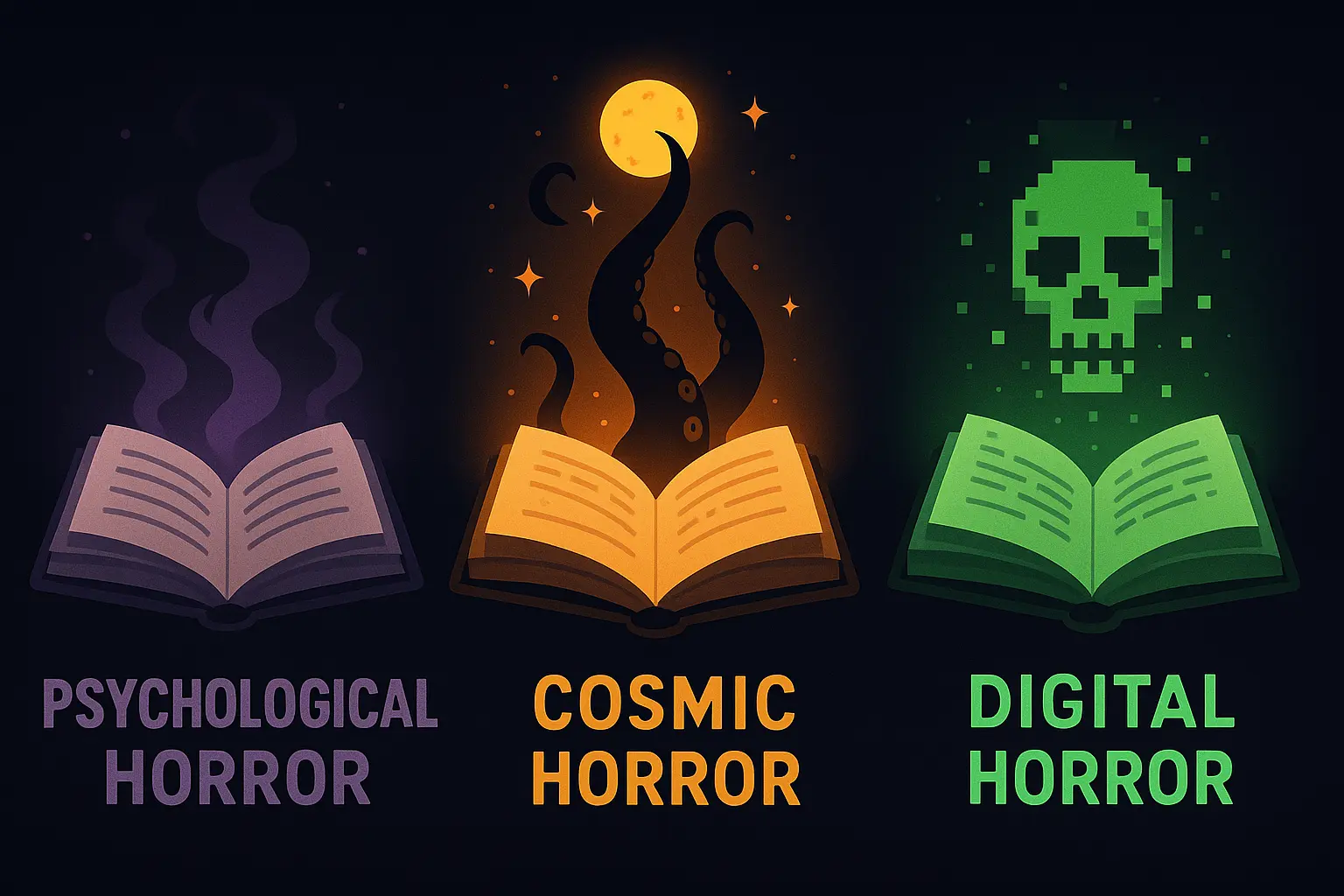
How to Actually Judge If a Horror Story Is Good
Figuring out if a horror story is actually worth your time means asking yourself six key questions: Does it actually scare you? Is the writing good? Is it doing something new? Will you still think about it next week? Can you actually get through it? And does it matter to your real life?
Does It Actually Scare You or Just Gross You Out?
The Stories That’ll Haunt You:
“I Have No Mouth, and I Must Scream” creates existential dread through eternal suffering scenarios that make you question basic assumptions about death as escape. The AI’s hatred for humanity feels personal and inescapable.
“The Call of Cthulhu” generates cosmic insignificance fears that stick with you long after reading. Realizing that humanity exists at the mercy of indifferent cosmic forces creates lasting psychological unease.
“Get Out” produces social horror that makes you question everyday interactions and seemingly friendly behavior. The story transforms liberal spaces into threatening environments through racial commentary that feels uncomfortably real.
Pretty Scary Stuff:
“The Yellow Wallpaper” builds claustrophobic psychological breakdown through accumulating details and unreliable narration. The confined setting amplifies her mental deterioration in ways that feel genuinely disturbing.
“The Exorcist” combines religious horror with child endangerment, creating multiple layers of fear through faith challenges and parental protection instincts.
“Annihilation” distorts reality and environmental corruption, making familiar natural settings feel alien and threatening through unexplained transformations.
Decent But Not Life-Changing:
“The Metamorphosis” creates existential dread rather than active terror, focusing on alienation and identity loss through impossible transformation scenarios.
“The Handmaid’s Tale” produces dystopian oppression that disturbs more than frightens, examining systematic control through reproductive rights restrictions.
“The Picture of Dorian Gray” builds Gothic atmosphere with moral decay themes, creating unease through gradual revelation rather than immediate scares.
If you’re thinking about writing your own terrifying tales, check out horror story generator tools to develop concepts that achieve these different levels of psychological impact.
|
Story Type |
Fear Level |
How It Works |
How Long It Sticks |
How Much You’ll Care |
|---|---|---|---|---|
|
Psychological Horror |
High-Maximum |
Mental breakdown, unreliable narration |
Weeks-Months |
Deep emotional connection |
|
Supernatural Horror |
Moderate-High |
Ambiguity, creepy atmosphere |
Days-Weeks |
Moderate engagement |
|
Body Horror |
High |
Physical transformation, gross imagery |
Days-Weeks |
Visceral reaction |
|
Cosmic Horror |
Maximum |
Existential revelation, insignificance |
Months-Years |
Philosophical questioning |
|
Social Horror |
High |
Cultural commentary, familiar threats |
Weeks-Months |
Personal relevance |
|
Digital Horror |
Moderate-High |
Technology extrapolation, current fears |
Days-Weeks |
Immediate recognition |
Is the Writing Actually Good?
Literary Masterpieces:
“The Yellow Wallpaper” demonstrates perfect unreliable narrator technique, letting you experience psychological breakdown through carefully controlled perspective shifts and building details.
“The Road” elevates horror themes through beautiful prose that transforms post-apocalyptic survival into profound meditation on love, hope, and human dignity amid civilizational collapse.
“The Turn of the Screw” achieves masterful ambiguity and psychological complexity, keeping you guessing about supernatural versus psychological explanations throughout.
Really Well Done:
“The Lottery” presents perfectly structured short story construction with a devastating ending that makes you rethink everything that came before through careful foreshadowing and misdirection.
“Rosemary’s Baby” maintains expertly paced paranoid thriller development, building suspense through accumulating evidence while keeping plausible alternative explanations.
“The Haunting of Hill House” creates atmospheric writing with psychological depth, blending supernatural elements with character development and emotional resonance.
Gets the Job Done:
Most Lovecraft stories present ideas stronger than prose style – the writing can be dense and old-fashioned, but the concepts are mind-blowing if you stick with it.
“The Fly” delivers effective body horror through straightforward narrative structure, focusing on transformation details rather than complex literary techniques.
Modern creepypastas show variable quality levels, often emphasizing concept over craft but creating new storytelling forms adapted to how we consume media online.
Is It Doing Something New?
Groundbreaking Stuff:
“Black Mirror” episodes pioneered technology horror subgenres, creating new frameworks for examining digital age anxieties through speculative fiction techniques.
“The Yellow Wallpaper” introduced early psychological horror from female perspectives, challenging medical authority and social expectations through innovative narrative techniques.
Internet creepypastas developed new storytelling mediums and collaborative creation methods, adapting horror for digital native audiences through multimedia approaches.
Fresh Takes on Old Ideas:
“Get Out” transforms social commentary through horror frameworks, using body-snatching elements to examine racial dynamics in contemporary liberal spaces.
“Annihilation” combines environmental horror with cosmic horror elements, creating hybrid approaches that address climate change anxieties through unknowable natural forces.
“We Need to Talk About Kevin” subverts maternal horror expectations, examining parental responsibility and guilt through letters that reveal the story backwards.
Classic Stuff Done Really Well:
“The Call of Cthulhu” defined cosmic horror templates that still influence writers today, establishing conventions for incomprehensible entities and human insignificance themes.
“The Exorcist” perfected possession narrative structures, balancing religious elements with psychological uncertainty through careful character development and escalating supernatural events.
“The Turn of the Screw” mastered ghost story ambiguity, creating psychological complexity that allows multiple interpretations while maintaining narrative coherence.
Will You Still Think About This Next Week?
Stories That’ll Change How You See Things:
“The Road” explores father-son love amid apocalyptic circumstances, examining how relationships survive when civilization collapses and moral frameworks disappear.
“The Handmaid’s Tale” addresses women’s autonomy and reproductive rights through dystopian scenarios that reflect contemporary political concerns and historical precedents.
“Get Out” confronts racial trauma and social horror through personal relationships, making systemic racism viscerally frightening through individual character experiences.
Pretty Deep Stuff:
“The Metamorphosis” examines alienation and family dynamics through impossible transformation, exploring how identity changes affect relationships and social connections.
“The Lottery” reveals conformity and tradition’s dark power through community ritual, questioning how social pressure maintains harmful practices across generations.
“Rosemary’s Baby” explores trust, paranoia, and violation through pregnancy horror, examining how isolation and gaslighting undermine personal agency and perception.
Mostly Just Entertainment:
“The Fly” focuses on body horror spectacle through transformation details, emphasizing visceral impact over deeper thematic exploration.
“Poltergeist” delivers family protection thriller elements, using supernatural threats to create tension around domestic security and parental responsibility.
Most creepypastas emphasize internet culture fears through digital native storytelling, reflecting online community anxieties rather than universal human themes.
Can You Actually Get Through It?
Perfect for Beginners:
“The Lottery” clocks in at 3,000 words with clear narrative structure, making it accessible for readers new to horror while delivering powerful impact through straightforward storytelling.
Urban legends use familiar formats and contemporary settings, providing entry points for casual readers through recognizable narrative structures and cultural references.
“Black Mirror” episodes offer contemporary, relatable scenarios that connect with modern audiences through technology and social media familiarity.
You’ll Need to Focus But It’s Worth It:
“The Yellow Wallpaper” requires understanding historical context about women’s medical treatment and social restrictions, but rewards you with rich psychological complexity.
“Rosemary’s Baby” presents novel-length content with accessible prose style, building suspense through character development and plot progression rather than literary complexity.
“The Haunting of Hill House” creates atmospheric storytelling that stays straightforward despite psychological depth, balancing supernatural elements with clear narrative progression.
Prepare to Work For It:
Lovecraft stories demand patience with old-fashioned language and dense prose styles, but the philosophical concepts are worth the effort if you can get through the adjective overload.
“The Turn of the Screw” maintains deliberate narrative ambiguity that requires active interpretation and analysis, offering multiple valid readings through careful textual examination.
“Annihilation” presents abstract, surreal elements requiring interpretation skills, using environmental science concepts and unreliable narration to create meaning through reader engagement.
Does This Matter to Your Actual Life?
Urgently Relevant Right Now:
“Black Mirror” addresses AI, social media addiction, and technology dependence that define current cultural conversations about digital life’s psychological impact.
“Get Out” examines ongoing racial tensions and microaggressions in liberal spaces, reflecting contemporary discussions about racism’s subtle manifestations in progressive communities.
Modern creepypastas reflect internet culture and digital native experiences, creating horror from online community fears and digital age isolation.
Comes and Goes But Always Returns:
“The Handmaid’s Tale” addresses reproductive rights debates that resurface across different political periods, maintaining relevance through recurring cultural conflicts about women’s autonomy.
“The Lottery” explores conformity pressures that appear in any era, examining how communities maintain harmful traditions through social pressure and unquestioned authority.
“Rosemary’s Baby” reflects paranoia and institutional distrust that emerge during periods of social uncertainty and authority questioning.
Always Relevant:
“The Metamorphosis” examines alienation that transcends specific eras, exploring how individuals become isolated from family and community through circumstances beyond their control.
“The Road” explores parental love and survival instincts that remain constant across human experience, examining how relationships endure through extreme circumstances.
“The Call of Cthulhu” addresses human cosmic insignificance that stays relevant regardless of scientific advancement or cultural change.
|
How Hard Is It |
Reading Time |
Complexity |
Content Warnings |
Best For |
|---|---|---|---|---|
|
Easy |
Under 30 minutes |
Simple story structure |
Mild scary stuff |
New to horror, casual reading |
|
Medium |
30-90 minutes |
Some literary techniques |
Moderate violence/disturbing themes |
Getting into horror, focused reading |
|
Challenging |
90+ minutes |
Complex symbolism, dense writing |
Intense violence/psychological content |
Experienced readers, serious study |
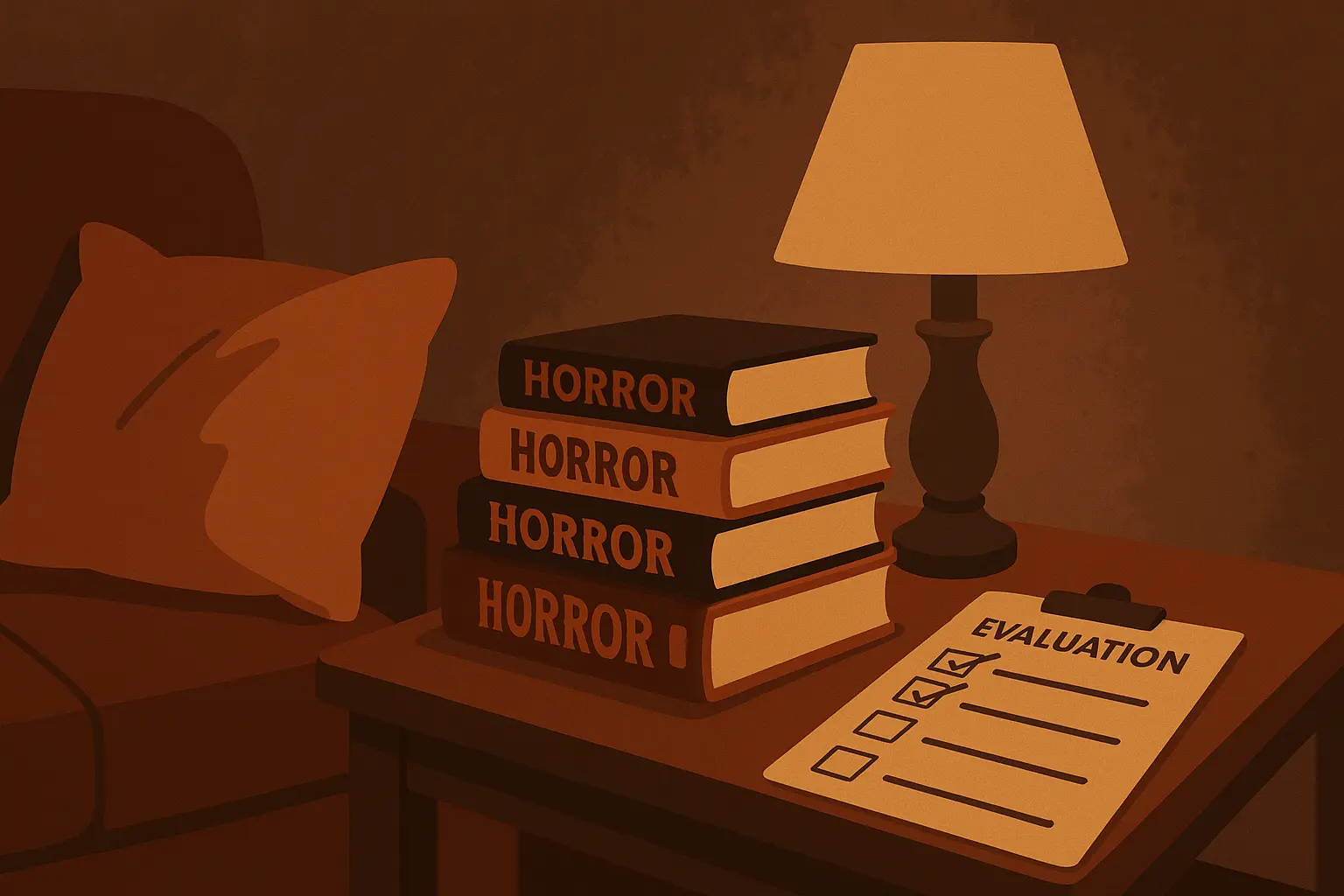
How Nairrate Can Help You Write Your Own Nightmare Fuel
Creating effective horror stories means mastering multiple complex elements: building psychological tension, developing characters people actually care about, balancing familiar and original elements, and understanding what resonates with contemporary audiences.
Specific Horror Writing Problems Nairrate Actually Solves
Setting the Mood: The Story Starters Generator gives you opening lines that immediately establish atmosphere – crucial for stories where mood drives the horror. Whether you need mysterious beginnings for psychological horror or direct supernatural hooks, the AI gets genre-specific techniques for grabbing readers from the first sentence.
Pacing Issues: Horror needs precise timing to build tension effectively. Nairrate helps you avoid common problems like revealing threats too early or dragging out suspense until readers get bored. The AI suggests plot developments that keep tension while building toward satisfying revelations.
Making Characters Feel Real: Horror protagonists need to be relatable before they become victims. The platform’s character tools help create protagonists with realistic motivations and flaws, making their fears more impactful and their fates more emotionally resonant.
Balancing Familiar and Fresh: Whether you’re writing psychological horror or cosmic horror, Nairrate understands different subgenre requirements and helps you meet reader expectations while finding fresh angles. The AI recognizes conventions while suggesting innovative approaches.
Sticking the Landing: Many horror stories succeed or fail on their endings. From twist revelations to ambiguous conclusions, Nairrate suggests multiple ending approaches to maximize emotional impact and reader satisfaction.
Say you’re struggling with a haunted house story and input: “Family moves into old Victorian mansion, strange sounds at night.” Nairrate might suggest: “What if the sounds aren’t ghosts, but the house itself trying to communicate a warning about something buried in the basement?” This transforms a familiar premise into something more original while keeping recognizable horror elements.
From Concept to Completion Without Getting Stuck
The Story Prompt Generator provides creative challenges and scenarios that spark new horror concepts or help you approach familiar themes from unexpected directions. Initial brainstorming becomes less intimidating when you have AI assistance generating compelling starting points.
Story development support helps maintain narrative momentum while building toward climactic revelations. The AI suggests story developments that keep readers engaged while avoiding common horror pitfalls that kill tension or credibility.
Character creation assistance ensures your protagonists feel real and relatable before placing them in terrifying situations. Well-developed characters make horror more effective because readers invest emotionally in their survival and suffering.
Final refinement focuses on pacing, atmosphere, and genre conventions to ensure maximum impact with efficient prose. The AI helps polish your work while maintaining your unique voice and creative vision.
Whether you’re crafting creepypastas for online communities, developing full-length scary stories, or exploring the scariest horror concepts, Nairrate serves as your creative partner – offering fresh perspectives while you maintain creative control. The tool amplifies your creativity rather than replacing it, helping you discover new possibilities for creating maximum fear with minimum words.
If you’re thinking about writing your own horror stories after reading all these, Nairrate can help you brainstorm without getting stuck staring at a blank page for three hours (we’ve all been there).
For writers interested in understanding effective narrative techniques, checking out how to write a story using brain science principles can enhance the psychological impact of horror narratives.
Ready to craft your own spine-chilling narratives? Try Nairrate today and discover how our AI story generator can help you create horror stories that will haunt readers long after they’ve finished reading.
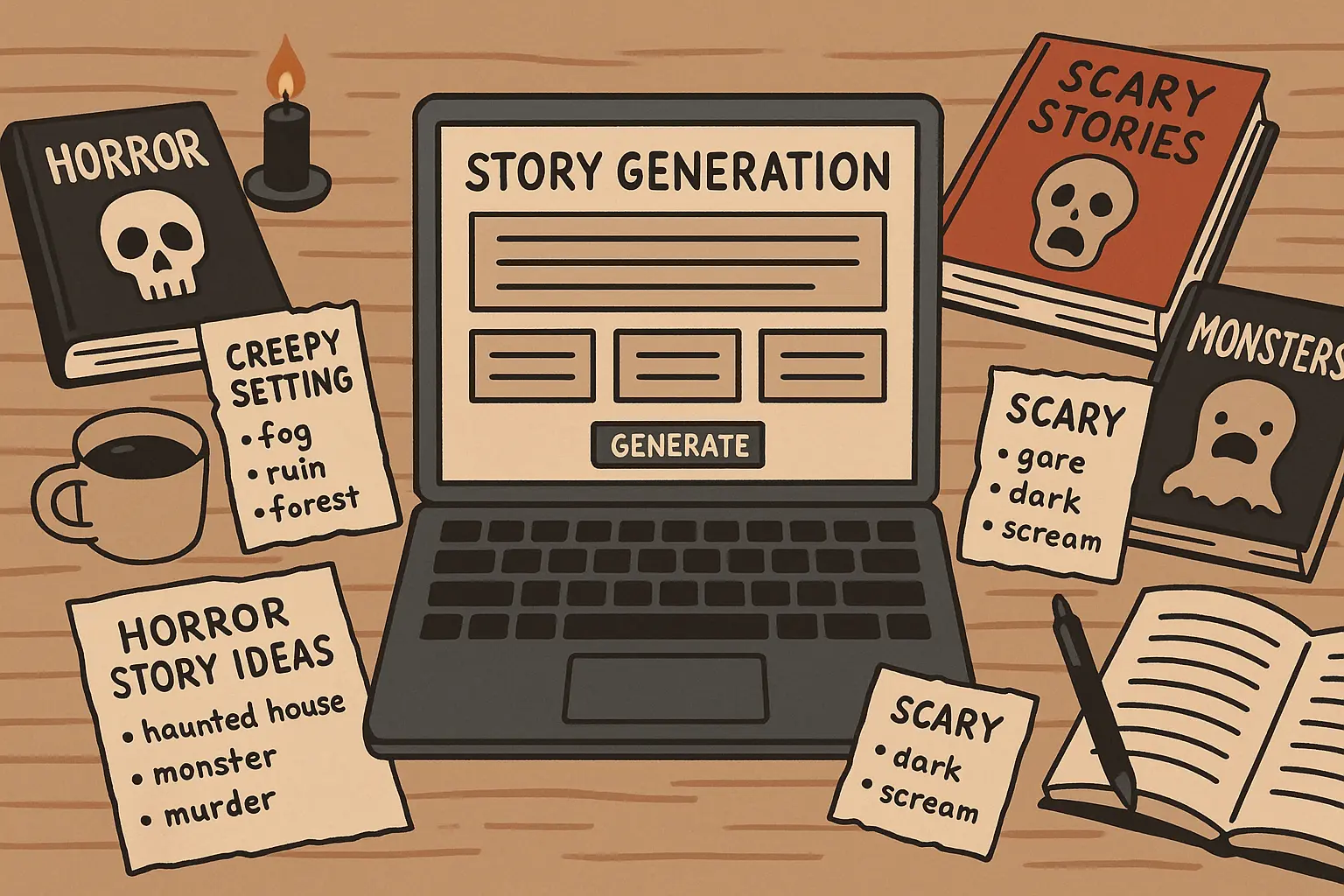
Final Thoughts
Horror stories keep evolving as new fears emerge and storytelling techniques develop, but the fundamental stuff that makes them effective stays consistent across different eras and cultural contexts. The 25 stories we looked at show how different approaches – from psychological breakdown to cosmic revelation, social commentary to digital age anxiety – can create lasting impact when done with skill and understanding.
Your journey through horror literature gets better when you understand these evaluation criteria and recognize how different subgenres achieve their effects. Whether you prefer the claustrophobic intensity of psychological horror, the otherworldly threats of supernatural tales, or the contemporary relevance of digital age fears, each category offers unique rewards for readers willing to engage with challenging material.
The most effective horror stories go beyond simple scares to explore deeper human experiences and cultural anxieties. They use fear as a vehicle for examining death, identity, social justice, and existential questions that define human experience. These stories stick with you because they illuminate truths about yourself and society that comfortable fiction might avoid.
Look, this list is just my take on what makes horror work. Maybe you’ll love something I only rated as “moderate” – that’s totally fine! The best horror story is the one that gets under YOUR skin, not mine. Horror appreciation is deeply personal – what terrifies one reader might leave another completely unmoved. Use these criteria and recommendations as starting points for your own exploration rather than gospel truth.
Each of these 25 horror stories offers something different: some will make you question reality, others will force you to confront uncomfortable social truths, and a few might fundamentally change how you view humanity’s place in the universe. The scariest stories often work precisely because they tap into fears we didn’t even know we had.
Start with the accessibility level that matches where you’re at right now, then gradually challenge yourself with more complex stuff. Horror literature rewards patience and engagement – the stories that initially seem difficult often provide the most rewarding experiences once you understand their techniques and themes.
What scares you most? Psychological breakdown? Cosmic insignificance? Social oppression? Technology gone wrong? Use that knowledge to guide your picks from this collection. The horror stories that align with your deepest anxieties will likely create the strongest impact and longest-lasting memories.
Trust me on this one – you’ll want to read most of these during daylight hours. And hey, what’s the scariest story you’ve ever read? I bet it’s on this list somewhere.



Add comment